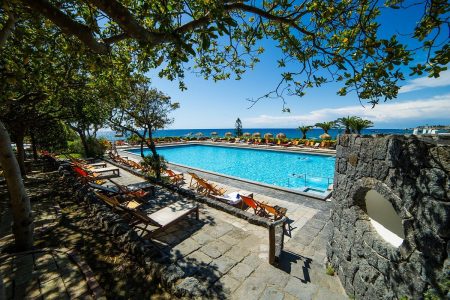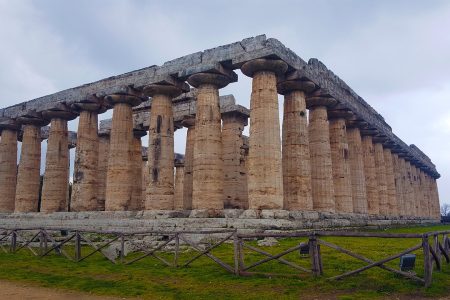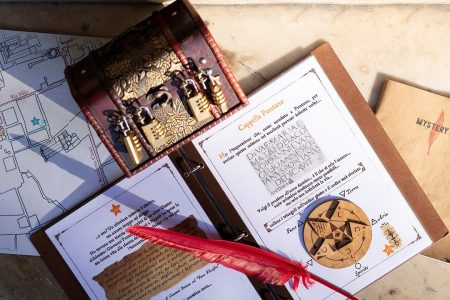The area of the Phlegraean Fields, which extends down to the Gulf of Pozzuoli, has been known from ancient times and all over the world for its lively volcanic activity. Many people fear it and study it, because it is a vast caldera in a dormant phase. Yet it is precisely this volcanic feature that has made it (and still makes it) an extremely rich and favourable area for agriculture. There are many typical and traditional crops that are grown in this area and represent excellent “delicacies” with their peculiar taste and properties, including grass peas, broad beans, peas and cherry tomatoes.
The Slow Food praesidia in the Phlegraean Fields
Nowadays we notice a growing interest in typical Italian genuine crops that are part of popular traditions. The region of the Phlegraean Fields is a very rich area and has its own typical products that have always grown in its territory. The Slow Food praesidia aim to preserve the biodiversity and traditions of these typical products through a study of these traditions and a recovery of the seeds that the most conservative farmers jealously guard among their crops.
Let’s take a closer look at the typical products of the Phlegraean territories, with their history and their peculiar characteristics.
Phlegraean Fields’ grass pea
When we talk about grass peas we indicate a type of legumes vaguely similar to chickpeas. They have been cultivated in the Phlegraean territories since Roman times. They were in fact already known by the name of cicercula and were one of the main products consumed by the peasant families. After the 1960s, however, the cultivation of grass peas was almost completely abandoned and its consumption is still in decline today. This is the reason why some farms, respectful of the territory and its traditions, are trying to recover this crop through its sowing and cultivation, along the terraces of the vineyards. In particular, a small group of farmers from Bacoli, including the Di Meo family, continued to produce it for family use. Furthermore, some restaurateurs have started to propose grass peas in their menus, in an attempt to make known its rustic and genuine flavour and its grainy pulp.
A good reason not to let grass peas disappear is because of its excellent health properties: it is rich in proteins, vitamins B1, B2 and PP, as well as minerals, starch and fiber.
The sowing takes place between January and February. In July the bush is traditionally eradicated, dried and “beaten” with the vivillo, an ancient tool of the Phlegraean peasants. The “waste” material will be used as fodder, while the seeds will be selected to be planted or consumed.
Santa Croce pea
The Santa Croce pea is a particular variety that is grown today in Quarto. In the past the Santa Croce peas were highly sought after for their ultra-fine shape and unparalleled sweetness. These crops of the Phlegraean land, typical products of Quarto di Marano, were in great demand and present in markets all over Italy. They gave farmers enough wealth to be held in high esteem and called by the name of “green gold”.
The cultivation of the Santa Croce pea was a very profitable activity because their sowing carried out in September guaranteed fruits until March.
During the 1960s, with the monopolization of the crops and the subsequent urbanization of Quarto, the main centre of production, a sharp decline began which affected this type of pea, which now only resists thanks to the strong will and determination of a few farmers. Its seeds have a really sweet taste and can also be eaten fresh, benefiting from their rich intake of starch and proteins.
Miliscola broad beans
The Phlegraean Fields’ broad bean of the Vittulana variety is one of the most appreciated and perhaps most cultivated typical crops in this area. Already cultivated by Greeks and Romans, the broad bean from the Phlegraean Fields represented one of the basic foods of the poor and was also essential for crops: in fact it was sown to enrich the soils with nitrogen and prepare them for future crops. This type of broad bean is rich in proteins, vitamins and iron and it is highly appreciated for its low fat content. The unique flavour and remarkable tenderness have always made this legume part of the Neapolitan tradition of Lent, when it is eaten fresh in combination with charcuterie and cheese. The broad beans from the Phlegraean Fields also taste very good with dishes made with pork, bacon or lard, or with aromatic herbs. The “Vittulana” variety contrasts with the “Quarantina”, which has smaller seeds. It is generally sown in autumn and harvested from March.
Phlegraean Fields’ Cannellino tomato
The Cannellino tomato is one of the Traditional Agri-Food Products of the Campania Region. It is considered an excellence of the Phlegraean Fields because it is precisely in this area that this little red jewel has been cultivated since the 19th century. Its name comes from the peculiarity of cultivation that involves the construction of scaffoldings made of bamboo canes (hence the name “cannellino”) intertwined with hemp or jute threads, above a sheet that prevents weeds from growing up.
This is an important and long-standing tradition that was about to disappear because of the low industrial yield that can be obtained from this cherry tomato, but the local farmers’ associations are working to promote this crop and give a new impetus to this small but delicious typical local product. Its flavour strikes a perfect balance between sweetness, acidity and sapidity. The Cannellino cherry tomato goes well with any type of dish, both cooked and raw.
However, the Controlled Designation of Origin has not yet been given to this very important typical Phlegrean product.








0 Comments